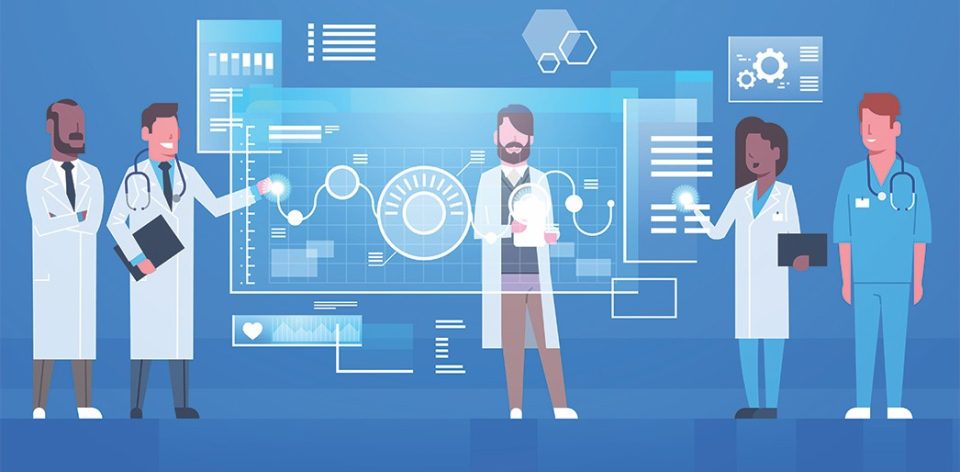Introduction
The healthcare sector has experienced a profound transformation due to technological advancements, reshaping how medical professionals diagnose, treat, and manage patient care. Innovations such as electronic health records (EHRs), telemedicine, and artificial intelligence (AI) have introduced significant improvements, making healthcare more efficient and accessible. Despite these advancements, the integration of technology into healthcare presents a range of challenges. This article delves into the multifaceted role of technology in healthcare, examining its advancements, benefits, and the hurdles that accompany its implementation.
Advancements in Medical Diagnosis and Treatment
Technological progress has dramatically enhanced medical diagnosis and treatment options, leading to more accurate and effective healthcare delivery. Modern imaging technologies, such as Magnetic Resonance Imaging (MRI) and Computed Tomography (CT) scans, offer detailed and precise views of the human body, facilitating accurate diagnoses and better treatment planning. Additionally, the advent of robotic surgery systems has enabled surgeons to perform minimally invasive procedures with unparalleled precision, reducing recovery times and improving patient outcomes.
The synergy between technology and pharmaceutical research has also yielded groundbreaking developments. Targeted therapies and personalized medicine, driven by advances in genomics and biotechnology, have revolutionized treatment approaches, offering tailored solutions that address the unique characteristics of individual patients. These innovations hold the promise of more effective treatments with fewer side effects, marking a significant leap forward in medical care.
Electronic Health Records (EHRs) and Data Management
The implementation of Electronic Health Records (EHRs) has been a game-changer in how patient data is managed and utilized. EHR systems streamline workflows, enhance communication between healthcare providers, and contribute to improved patient safety. The digitalization of health records facilitates the easy sharing of information across different healthcare settings, leading to more coordinated and efficient care.
Moreover, the integration of data analytics and machine learning algorithms with EHRs offers powerful tools for identifying patterns, predicting patient outcomes, and supporting evidence-based decision-making. By leveraging these technologies, healthcare providers can make more informed decisions and improve the overall quality of care. However, the effective utilization of EHR systems is not without its challenges. Issues related to interoperability—ensuring that different systems can communicate and exchange information seamlessly—pose significant obstacles. Additionally, concerns about data privacy and security must be addressed to protect sensitive patient information from unauthorized access and potential breaches.
Telemedicine and Remote Patient Monitoring
Telemedicine has emerged as a transformative force in healthcare, particularly in remote or underserved areas. By enabling patients to consult healthcare professionals through video calls, telemedicine removes geographical barriers and provides greater access to care. This technology has proven to be especially valuable in emergencies and situations where traditional in-person visits are impractical.
Remote patient monitoring (RPM) devices, including wearable sensors and smart health gadgets, further enhance patient care by allowing the continuous collection of real-time health data. These devices enable healthcare providers to monitor patients’ conditions remotely, facilitating proactive care management and early intervention. Telemedicine and RPM not only improve access to care but also contribute to cost savings and increased convenience for patients.
Artificial Intelligence (AI) and Machine Learning
Artificial Intelligence (AI) and machine learning are at the forefront of technological advancements in healthcare. These technologies can analyze large volumes of data, uncover hidden patterns, and generate insights that support diagnostic processes, treatment planning, and disease management. AI-powered tools, such as chatbots and virtual assistants, are increasingly being used to enhance patient engagement, provide educational resources, and streamline administrative tasks.
Despite the promising potential of AI, there are several challenges that need to be addressed. Ensuring the quality and accuracy of data used to train AI algorithms is crucial to prevent erroneous conclusions and recommendations. Additionally, addressing algorithmic bias—where AI systems may reflect or amplify existing biases in data—requires careful consideration to ensure fairness and equity in healthcare delivery. Ethical considerations, such as patient consent and transparency, also play a critical role in the responsible implementation of AI technologies.
Cybersecurity and Data Privacy
As healthcare organizations increasingly rely on digital technologies, cybersecurity and data privacy have become paramount concerns. Protecting sensitive patient information from cyber threats and data breaches requires robust security measures and ongoing vigilance. Healthcare providers must invest in advanced cybersecurity infrastructure and practices to safeguard against unauthorized access and potential attacks.
Finding the right balance between data accessibility for healthcare professionals and protecting patient privacy is an ongoing challenge. It is essential to implement stringent data protection protocols and ensure compliance with regulations to maintain the trust and confidentiality of patient information.
Digital Divide and Technological Accessibility
While technological advancements hold great promise for improving healthcare outcomes, it is essential to address the digital divide to ensure that these benefits are equitably distributed. Disparities in internet access, technological literacy, and affordability can limit the effectiveness of technology-based healthcare solutions, particularly for marginalized and underserved populations.
Efforts must be made to bridge these gaps and promote equitable access to technological resources. By addressing barriers to technology adoption and providing support for those with limited access, the healthcare industry can work towards ensuring that advancements in technology benefit all individuals, regardless of their socioeconomic status or geographic location.
Conclusion
Technology plays a pivotal role in transforming the healthcare landscape, offering advancements that enhance diagnostics, treatment, and patient care. The integration of technologies such as EHRs, telemedicine, AI, and remote monitoring has the potential to improve the quality and accessibility of healthcare services. However, addressing challenges related to data management, cybersecurity, and equitable access is crucial for maximizing the benefits of these innovations. By embracing and addressing these technological advancements, healthcare professionals can deliver more efficient, personalized, and accessible care, ultimately leading to better patient outcomes and a more effective healthcare system.



